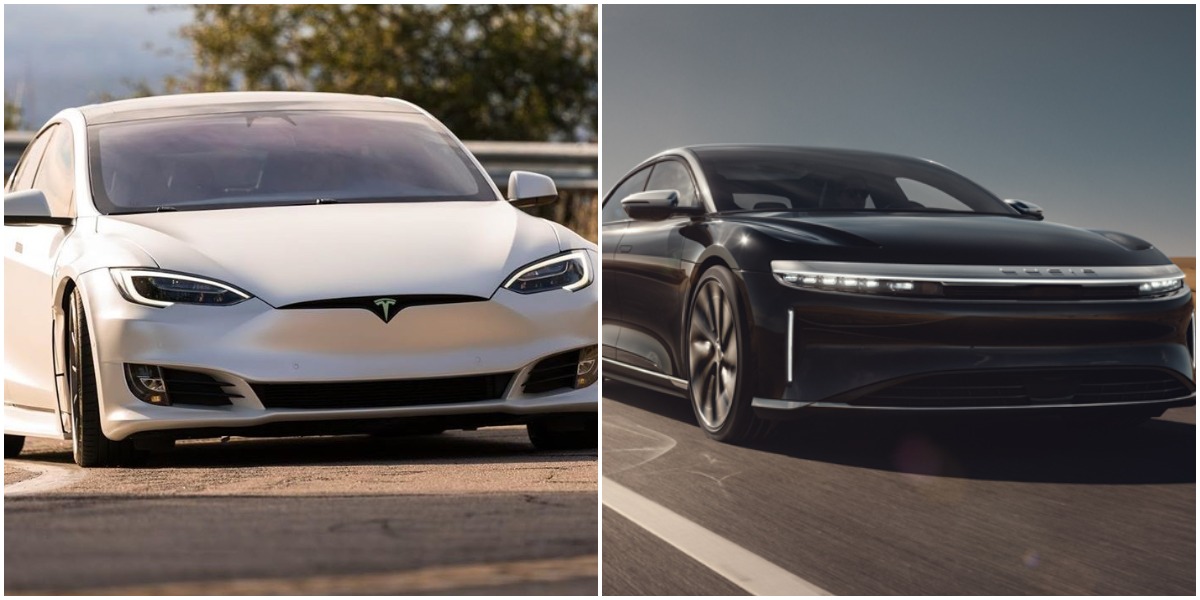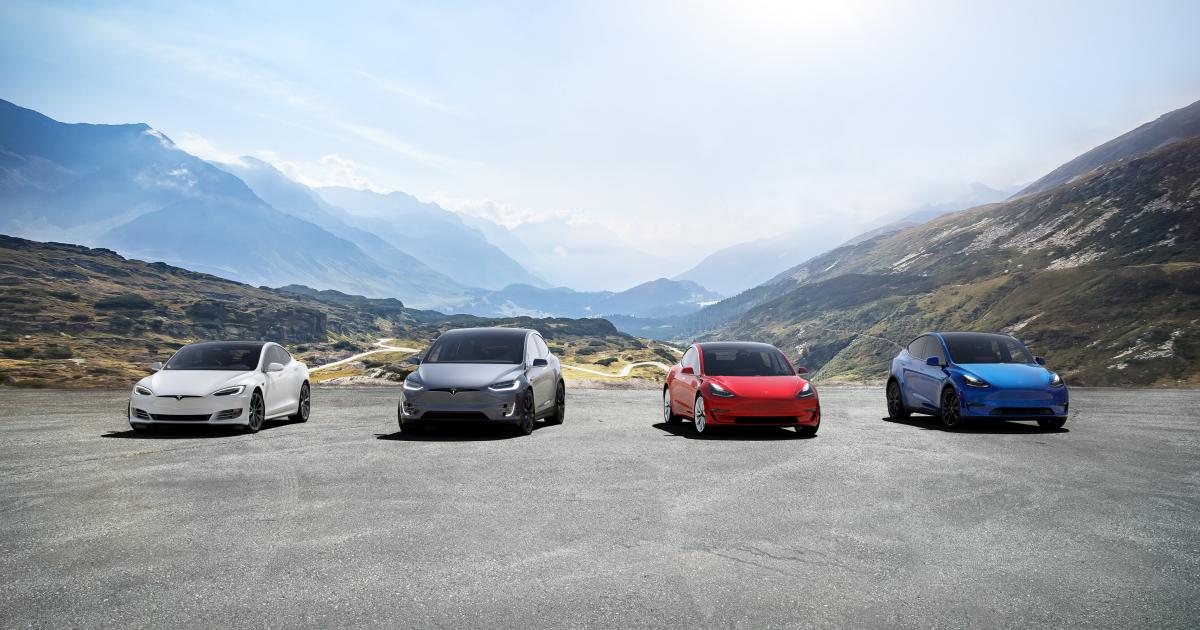

News
Why Tesla shouldn’t worry about Lucid’s 517-mile range
The Tesla Model S is no longer the highest estimated range EV on the market, and the Lucid Air is. After the latter company revealed that the Air, its first model, has an EPA-estimated range of 517 miles, it opened doors for Lucid to become a real player in the transition to sustainable passenger transportation.
However, Tesla still has a few significant advantages in the field despite the Model S losing the title of “best range on an EV,” because the company has a few things that Lucid does not.
Here are a few things to remember.
The Model S still has over 400 miles of range
Despite not having 517 miles of EV range, the Model S still has an impressive 402-mile rating per charge based on EPA estimates. The Long Range Plus variant has done wonders for EV competition and has solidified Tesla’s position as the leader in electric car development. It is important to note that Tesla’s flagship sedan still is the only currently available vehicle with at least 400 miles of range, making it a prize all on its own for anyone who wants to forget about range anxiety altogether completely.

Battery Day is only a little over a month away
Tesla’s Battery Day is September 22, so there are plenty of things to speculate about for the event. Tesla may unveil its million-mile capable battery pack at the event. But even further, the company has been working on several other developments that are geared toward using more responsible battery materials and getting rid of the controversial cobalt that is used in cells now. Regardless of what is revealed on September 22, it will likely be a response to what Lucid showed the world today. Elon is a master of responding to Tesla’s competitors.
Consumers don’t “need” 500+ miles of range
500+ miles of range is unheard of in the EV community, but it does not mean that consumers are going to flock to a vehicle that offers that capability. With higher range usually comes higher kWh battery packs, which frequently means more money. The details of the battery pack are not known and will likely be revealed at the company’s unveiling event on September 9. Lucid CEO Peter Rawlinson did state that the Air will have a 900-volt architecture.
However, consumers do not need 500 miles of range. Very few people require that amount of range for a typical commute to work and even cross country drives, which are rare, to begin with, don’t need this much range. The EV charging infrastructure has grown exponentially in the past few years, and charging stations are standard along popular routes of travel. If anything, the range is a luxury that will ease the minds of some owners.
Sam Abuelsamid, a principal analyst for Guidehouse Insights, stated that customers tend to buy cars that have functions that are not needed.
“Car buyers are not rational and never have been. Thus automakers are scrambling to build 300+ mile EVs because consumers say they want to go anywhere, anytime. How many people do you know that have ever actually driven across the country?” he said, according to Green Car Reports.
Tesla still has the lead in terms of EV development as a whole
Two sedans, one SUV, one crossover, a pickup, a Supercar, and a Semi: Those are all of the things Tesla is selling or is developing. The company has a lot to offer consumers because it has equipped itself with vehicles that fit every body style and description. Now, the company is building two new Gigafactories, one in Germany and one in Texas to keep up with increasing demand. Meanwhile, Lucid is still a new player on the block, and it has a long way to go in vehicle development, especially if it expects to keep up with Tesla’s momentum in the sector.
Tesla’s Lineup of Model S, Model X, Model 3, and Model Y. (Credit: Tesla.com)
Lucid’s 517-mile capable Air will undoubtedly drive competition in the electric vehicle market to levels that it has not seen before. When electric vehicles were first being introduced, range ratings of 100 miles or less were somewhat standard. Tesla’s focus on range and performance through high-grade battery development changed the EV sector altogether and set a standard for the industry as a whole. Now, companies are stepping up their game to match and surpass other automakers, which is what is going on with Lucid.
However, Tesla will likely have a rebuttal for this range rating, and it could come as soon as September 22. There is not much for Elon Musk’s company to worry about right now; it still holds an advantage over anyone and everyone who makes electric cars.

Elon Musk
Elon Musk and Tesla AI Director share insights after empty driver seat Robotaxi rides
The executives’ unoccupied tests hint at the rapid progress of Tesla’s unsupervised Robotaxi efforts.

Tesla CEO Elon Musk and AI Director Ashok Elluswamy celebrated Christmas Eve by sharing personal experiences with Robotaxi vehicles that had no safety monitor or occupant in the driver’s seat. Musk described the system’s “perfect driving” around Austin, while Elluswamy posted video from the back seat, calling it “an amazing experience.”
The executives’ unoccupied tests hint at the rapid progress of Tesla’s unsupervised Robotaxi efforts.
Elon and Ashok’s firsthand Robotaxi insights
Prior to Musk and the Tesla AI Director’s posts, sightings of unmanned Teslas navigating public roads were widely shared on social media. One such vehicle was spotted in Austin, Texas, which Elon Musk acknowleged by stating that “Testing is underway with no occupants in the car.”
Based on his Christmas Eve post, Musk seemed to have tested an unmanned Tesla himself. “A Tesla with no safety monitor in the car and me sitting in the passenger seat took me all around Austin on Sunday with perfect driving,” Musk wrote in his post.
Elluswamy responded with a 2-minute video showing himself in the rear of an unmanned Tesla. The video featured the vehicle’s empty front seats, as well as its smooth handling through real-world traffic. He captioned his video with the words, “It’s an amazing experience!”
Towards Unsupervised operations
During an xAI Hackathon earlier this month, Elon Musk mentioned that Tesla owed be removing Safety Monitors from its Robotaxis in Austin in just three weeks. “Unsupervised is pretty much solved at this point. So there will be Tesla Robotaxis operating in Austin with no one in them. Not even anyone in the passenger seat in about three weeks,” he said. Musk echoed similar estimates at the 2025 Annual Shareholder Meeting and the Q3 2025 earnings call.
Considering the insights that were posted Musk and Elluswamy, it does appear that Tesla is working hard towards operating its Robotaxis with no safety monitors. This is quite impressive considering that the service was launched just earlier this year.
Elon Musk
Starlink passes 9 million active customers just weeks after hitting 8 million
The milestone highlights the accelerating growth of Starlink, which has now been adding over 20,000 new users per day.

SpaceX’s Starlink satellite internet service has continued its rapid global expansion, surpassing 9 million active customers just weeks after crossing the 8 million mark.
The milestone highlights the accelerating growth of Starlink, which has now been adding over 20,000 new users per day.
9 million customers
In a post on X, SpaceX stated that Starlink now serves over 9 million active users across 155 countries, territories, and markets. The company reached 8 million customers in early November, meaning it added roughly 1 million subscribers in under seven weeks, or about 21,275 new users on average per day.
“Starlink is connecting more than 9M active customers with high-speed internet across 155 countries, territories, and many other markets,” Starlink wrote in a post on its official X account. SpaceX President Gwynne Shotwell also celebrated the milestone on X. “A huge thank you to all of our customers and congrats to the Starlink team for such an incredible product,” she wrote.
That growth rate reflects both rising demand for broadband in underserved regions and Starlink’s expanding satellite constellation, which now includes more than 9,000 low-Earth-orbit satellites designed to deliver high-speed, low-latency internet worldwide.
Starlink’s momentum
Starlink’s momentum has been building up. SpaceX reported 4.6 million Starlink customers in December 2024, followed by 7 million by August 2025, and 8 million customers in November. Independent data also suggests Starlink usage is rising sharply, with Cloudflare reporting that global web traffic from Starlink users more than doubled in 2025, as noted in an Insider report.
Starlink’s momentum is increasingly tied to SpaceX’s broader financial outlook. Elon Musk has said the satellite network is “by far” the company’s largest revenue driver, and reports suggest SpaceX may be positioning itself for an initial public offering as soon as next year, with valuations estimated as high as $1.5 trillion. Musk has also suggested in the past that Starlink could have its own IPO in the future.
News
NVIDIA Director of Robotics: Tesla FSD v14 is the first AI to pass the “Physical Turing Test”
After testing FSD v14, Fan stated that his experience with FSD felt magical at first, but it soon started to feel like a routine.

NVIDIA Director of Robotics Jim Fan has praised Tesla’s Full Self-Driving (Supervised) v14 as the first AI to pass what he described as a “Physical Turing Test.”
After testing FSD v14, Fan stated that his experience with FSD felt magical at first, but it soon started to feel like a routine. And just like smartphones today, removing it now would “actively hurt.”
Jim Fan’s hands-on FSD v14 impressions
Fan, a leading researcher in embodied AI who is currently solving Physical AI at NVIDIA and spearheading the company’s Project GR00T initiative, noted that he actually was late to the Tesla game. He was, however, one of the first to try out FSD v14.
“I was very late to own a Tesla but among the earliest to try out FSD v14. It’s perhaps the first time I experience an AI that passes the Physical Turing Test: after a long day at work, you press a button, lay back, and couldn’t tell if a neural net or a human drove you home,” Fan wrote in a post on X.
Fan added: “Despite knowing exactly how robot learning works, I still find it magical watching the steering wheel turn by itself. First it feels surreal, next it becomes routine. Then, like the smartphone, taking it away actively hurts. This is how humanity gets rewired and glued to god-like technologies.”
The Physical Turing Test
The original Turing Test was conceived by Alan Turing in 1950, and it was aimed at determining if a machine could exhibit behavior that is equivalent to or indistinguishable from a human. By focusing on text-based conversations, the original Turing Test set a high bar for natural language processing and machine learning.
This test has been passed by today’s large language models. However, the capability to converse in a humanlike manner is a completely different challenge from performing real-world problem-solving or physical interactions. Thus, Fan introduced the Physical Turing Test, which challenges AI systems to demonstrate intelligence through physical actions.
Based on Fan’s comments, Tesla has demonstrated these intelligent physical actions with FSD v14. Elon Musk agreed with the NVIDIA executive, stating in a post on X that with FSD v14, “you can sense the sentience maturing.” Musk also praised Tesla AI, calling it the best “real-world AI” today.








